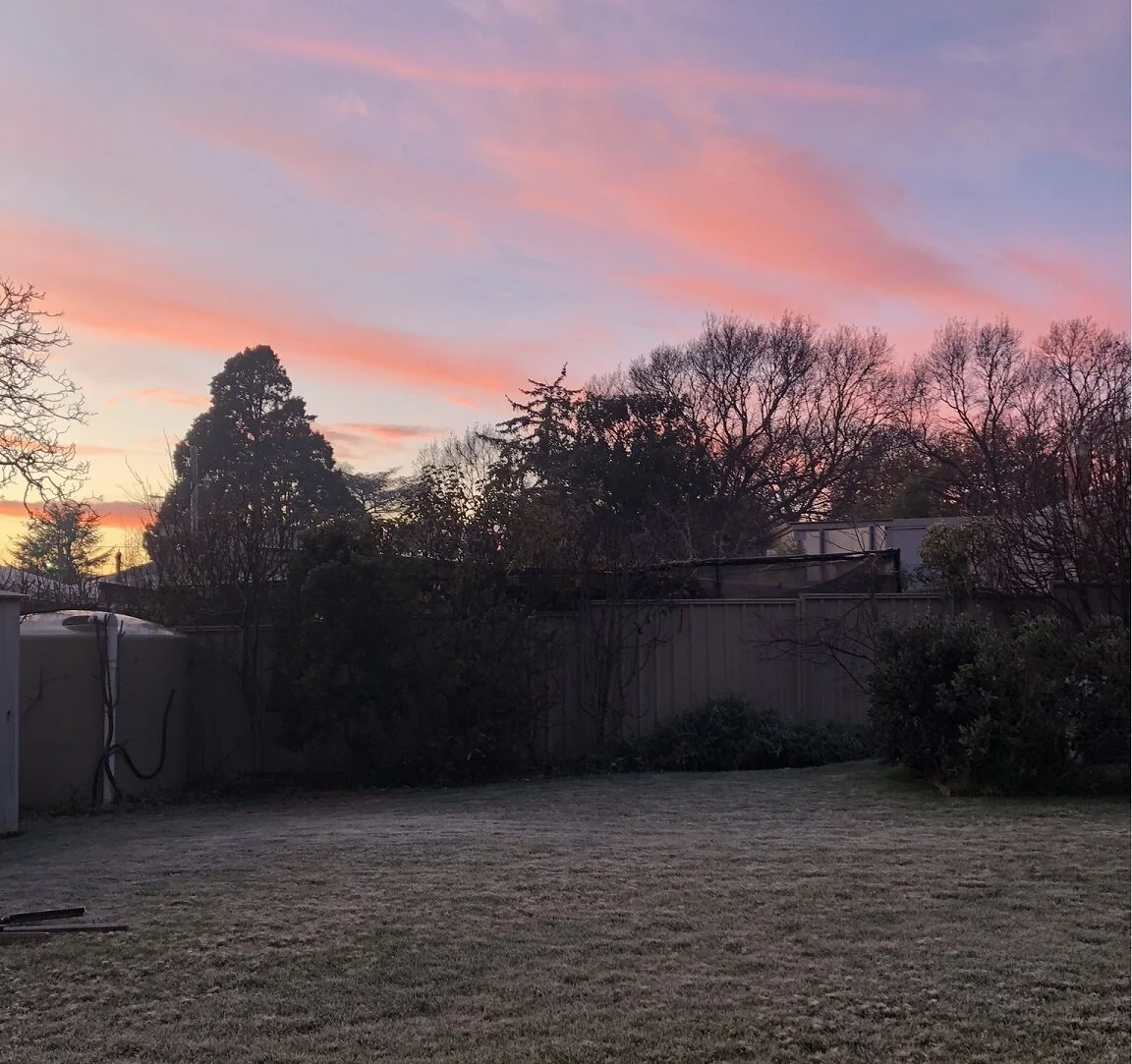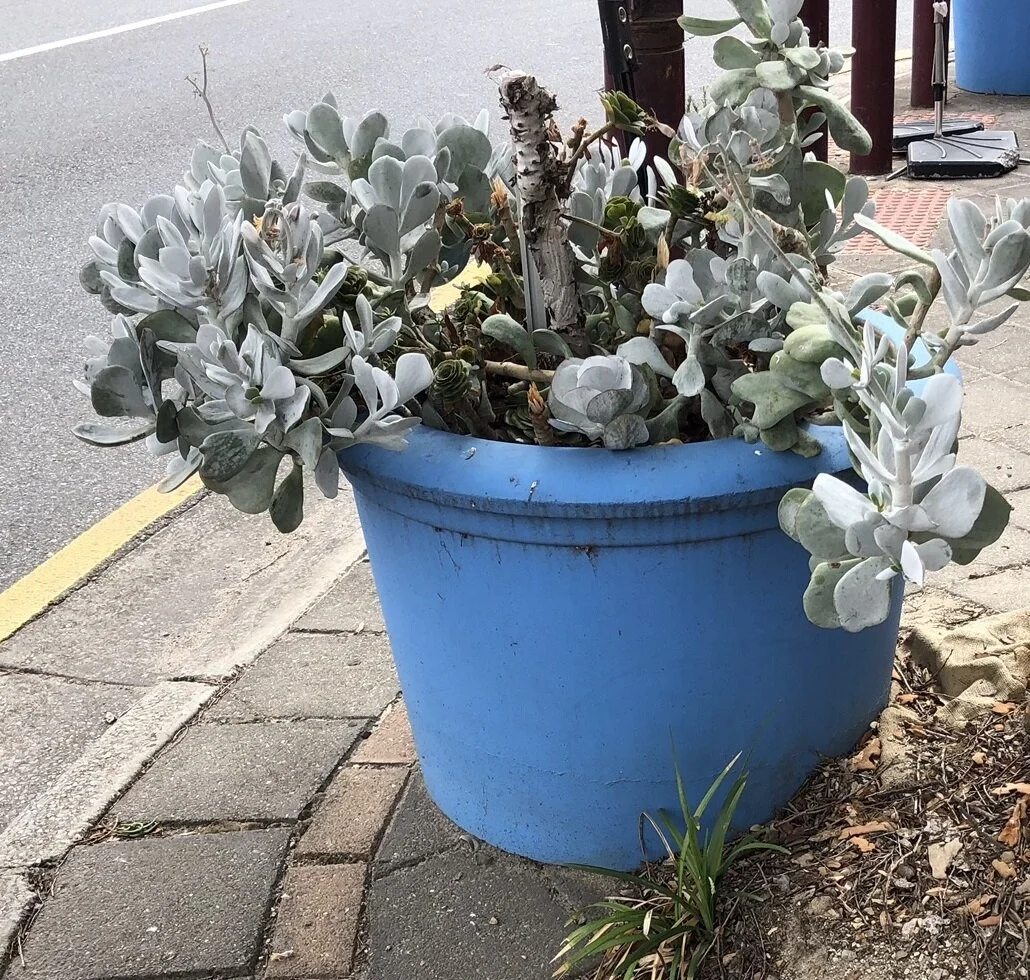The Garden and Work
I've been wanting to write this post for years. Well actually it's been trying to write itself – popping up all the time like Drop Dead Fred or a similar childhood imaginary friend.
I don't know why; it's not like the garden & work have a close relationship. In our world it's hard to think of two things more opposite or at least unrelated – like a fish to a bicycle.
One is a place to produce output for money – switched on, turned up, tuned in – on PCs, in vehicles, with machines – all kinds of tools & places. Very few are gardens; very few are in gardens; very few are near gardens. Unless we happen to be one of the lucky very few – garden design wunderkind Paul Bangay, or heirloom champion Clive Blazey or SA's own Sophie Thomson – the 0.01% who do it for a living.
At the other end of the spectrum we have the home garden – its very aim is to provide a sanctuary & refuge from the business, the busy-ness, the hyperachievement & game-face marathons of the workplace – and even from home when it flares up with similar intensities & hard slogs.
Few speak of work & garden in the same sentence. They aren't in the same book or library, or street or universe. So why do I try? Why don't I just accept the clumps of shiny alien variegated specimens on the office floor as enough?
The great Croton Plant (Codiaeum variegatum) – resplendent on many skyscraper floors
But now with COVID-19 and all the shutdowns & lockdowns, something opens up. Something distinct.
I'm not one to celebrate a negative – and COVID-19 has been one of these hands down. But I do love efforts by people to generate small unlikely positives out of a large negative – like some form of alchemy or at least recycling.
It starts here with the move of millions of people to work from home. Distance from colleagues aside, tracksuit mornings aside, a world of possibilities has appeared.
One of these is closeness between workplace & garden. I now have a full home office. It’s in a spare bedroom. I’ve cleared everything else out. Past my monitor through the west-facing window is the lushest part of the front garden, weeping cherry in autumn glow. Late in the afternoon the sun beams in and it's hard to sit & work – but it only lasts 20 minutes before the sun dips lower and the plants & soil go a bronzer, more pronounced set of colours. Soon the street lights will come on and I will be in my most productive phase.
Weeping cherry (Prunus pendula) - I like it a bit more than the Croton Plant
Whenever I get stiff or tired after a burst of work I pop outside for a 3-4 minute walk in the garden. Sometimes I continue thinking about work; sometimes my best ideas come to me; sometimes I take notes on new tasks I could do in the garden; sometimes I just look around & think; sometimes I just look into one space & space out, thinking about nothing.
And this is everything to me. It is everything I've dreamed of about working near a garden, gardening near a workplace, even gardening & working at the same time when I shouldn't be doing either (eg at night)! I am now not 30 kms or even 10 kms but 10 metres from my garden. Now, finally, not just in the same sentence but together.
Them’s the breaks
Work breaks are not idle talk or even talk about idleness. They are a serious topic that has been studied extensively. And the research is in: short breaks are good – good for work health & safety and good for productivity.
SafeWork Australia has said that 'sitting for longer than 30 minutes without a mini-break, and sitting all day at work, … are likely to be detrimental to your health.'
For office-based work the studies seem to have coalesced around a standard of 5-minute breaks after 25 minutes of work, or 10-minutes for every 50 minutes. These (or similar) break patterns have now been adopted in WHS policies or guidance material by many Australian governments & their agencies.
In terms of productivity the research has similar conclusions. Tony Schwartz, author of The Power of Full Engagement, has written that people tend to move from full focus to fatigue within 90 minutes, with the 'sweet spot' being somewhere between 30 and 90 minutes. He calls this 'pulse and pause.' Pushing past 90 minutes tends to produce more work but of diminishing quality & returns.
Here are some key studies and their recommended work/break splits:
A University of Illinois study recommends one break every hour
Inc Magazine recommends one break every 60-90 minutes
Robert Pozen (MIT Sloan School of Management) suggests a break every 75 to 90 minutes
The well-known Pomodoro Technique proposes stints of 25 minutes of work followed by a 3-5 minute break, then after four of these cycles longer breaks of 15-30 minutes per 90 minutes of work
Time-tracking app Desktime recommended in 2011, based on data from its own users, that optimum productivity came from taking 17 minute breaks every 52 minutes of work (mmh, maybe for entrepreneurs but not yet for the mere mortals!)
As for what to do during breaks, that could be anything but the key is to switch off - ie allow the brain to slow down & disengage. What better way to do this than get into the garden?
A bit of light pruning action – low impact on the suit
Aside from just walking around, there are several jobs one can do in the garden – even for 5 minutes. Right now I can think of:
Pruning (perfect now in winter – just grab some secateurs & snip away, handful of stems at a time)
Deadheading spent flowers (the miniature version of pruning – see above – you only need household scissors for this)
Weeding (unglamorous but necessary – again just get a few critters out at a time)
Watering pots (like meditation – requires almost no exertion or thought, but is vital)
Putting tools away (because I rarely put them all away the previous time!)
Are any of you seeing openings such as these? What are your 5-minute garden jobs & work resets?
Digging deeper – high suit risk. Just one hole for a 5-min break.







